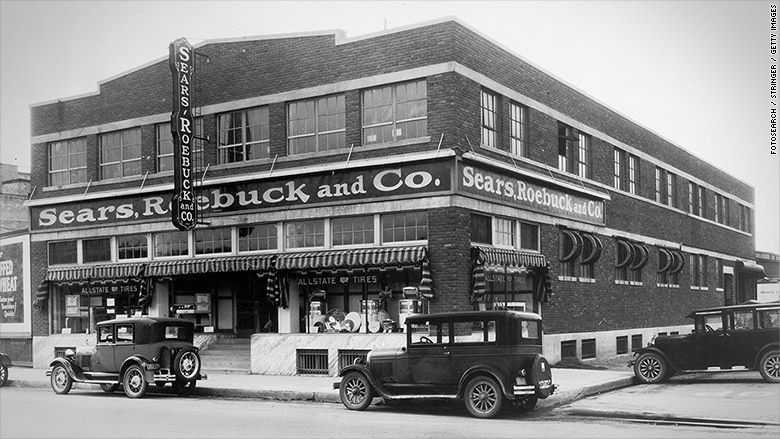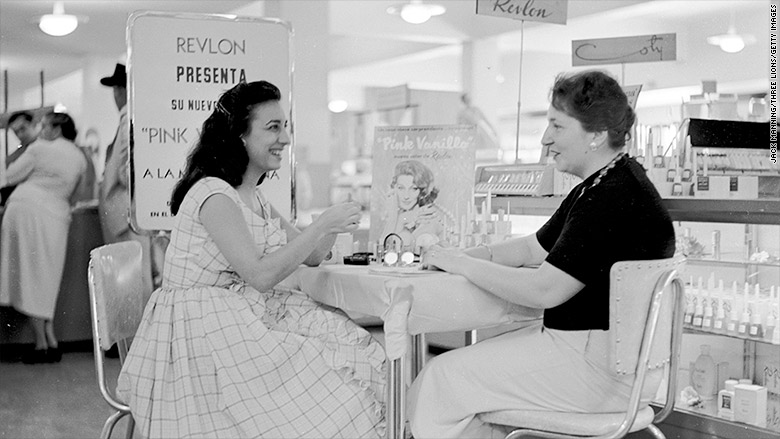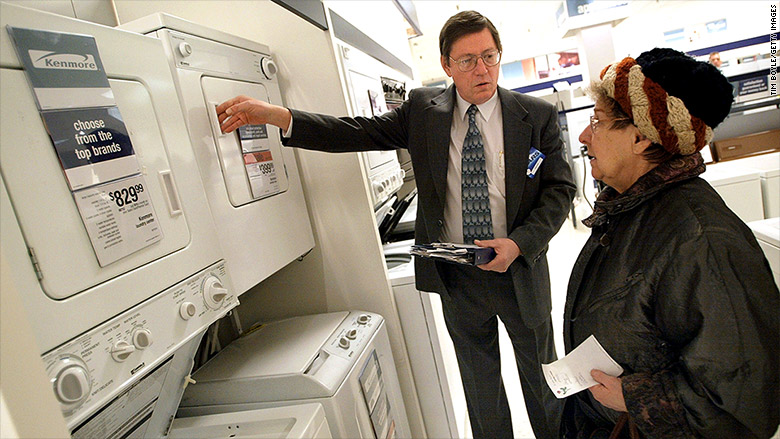
Sears was once the king of retailers. Now it's a cash-starved shell of itself whose very survival is in doubt.
How it got to this point is a sad tale of a once proud and iconic brand.
"This has turned into a slow death," said Sean Maharaj, director in the retail practice of consultant AArete.
Sears literally changed America by changing how Americans shopped, and ultimately lived.
When the Sears catalog first launched in 1888, most people made their own clothes and even their own furniture. Sears introduced mass-produced items instead. New labor saving appliances like washing machines changed the nature of household chores. Its stores helped lead to the suburbanization of postwar America, anchoring malls that helped new communities to grow.

It was the nation's largest employer. It was the Walmart (WMT) and Amazon (AMZN) of its day, combined.
But as the 20th century came to a close, so did Sears' reign.
It fell behind big box competitors such as Walmart, which offered lower prices and a wider variety of goods, including groceries. In 1999 Home Depot (HD), another big box rival that grew at Sears' expense, took its place in the Dow Jones Industrial Average, an index of the nation's most important and powerful companies.
As the 21st century began and Americans began shifting to online shopping, Sears fell further and further behind.
Related: Sears is at risk of default, and shares plunged to record lows
Instead of changing to meet the new reality, it took a step backward, merging with another troubled retailer Kmart, to form Sears Holdings (SHLD).
Its new CEO, hedge fund operator Eddie Lampert, thought he could turn around both companies simply by cutting costs and selling the real estate where underperforming stores were located. Sears and Kmart had 3,500 U.S. stores between them when the deal closed in 2005. When the latest round of store closings is complete, the company will be down to about 1,000 locations total.
The mistake Sears made, say experts, was failing to invest that savings to rebuild the business.
The company that invented at home shopping more than a century ago squandered an opportunity to become a major player online.

At the same time, Sears let its physical stores fall into disrepair. While other traditional retailers tried up upgrade their in-store experience, experts say Sears remaining locations were starved for cash, leaving them desolate, uninviting backwaters in the world of retail.
Macy's (M), Kohl's (KSS) and JCPenney (JCP) have all struggled with the shifting retail landscape, but they've adapted to the new reality better than Sears. Each of them reported strong holiday season sales this past year.
Meanwhile, sales at Sears and Kmart stores plunged 16% and 17% in November and December compared to a year earlier. And that doesn't even count the sales it lost due to more store closings.
Related: Sears had a miserable, miserable Christmas
"When you look at Macy's, they've invested a lot into their brand," said Greg Portell is lead partner in the retail practice of A.T. Kearney. "Sears hasn't invested in its brands."
In fact, it's been selling off its bedrock brands just to generate cash. Kenmore appliances. Craftsman tools. Diehard batteries. For years these trusted brands could only be found at Sears.
But Kenmore appliances and DieHard batteries can now be purchased on Amazon, and Sears is desperately looking for buyers for the brands. Lampert has offered to buy Kenmore himself if no one else will buy it. On Monday Craftsman tools went on sale at Lowe's, a Sears rival, for the first time after Sears sold the Craftsman brand to Stanley Black & Decker (SWJ) last year.
But Land's End is the brand that best illustrates the decline of Sears.

Unlike Kenmore and Craftsman, Sears purchased the Land's End business rather than creating it, paying $1.9 billion in cash for it in 2002. But its sales fell far short of expectations. By 2014 Sears had spun off the company to shareholders in a deal that brought Sears just $500 million in cash.
Today Lands End (LE) is a stand alone company with stock worth a total about $615 million, more than 50% above the $394 million market value of Sears Holdings.
Sears shares have been plunging for years, hitting a series of record lows earlier this year before rebounding slightly. Still it's down 61% over the course of the last 12 months.
The company insists it will be able achieve its long-promised turnaround.
Related: Sears is breaking up with Whirlpool after a century
"We remain intensely focused on becoming a more competitive retailer," the company said in a statement earlier this year. "We expect that the actions we are taking will support these efforts."
But last year Sears had to warn that there was "substantial doubt" it could remain in business. That made its problems worse because Sears suppliers started getting nervous. The entire retail industry relies on suppliers to provide goods on credit. But Sears vendors starting demanding cash up front or faster payments to protect themselves in case the retailer filed for bankruptcy.
Whirlpool (WHR), which started selling its appliances at Sears in 1916, was the most notable example of a vendor departure. The manufacturer stopped selling its Whirlpool, Maytag, KitchenAid and Jenn-Air products to Sears as of October 2017.
Sears was once the leader in U.S. appliance sales. But by last year, Sears accounted for less than 3% of Whirlpool's global sales.
"What you had is lack of strategic vision," said the consultant Sean Maharaj. He said all the store closings, brand sales and other efforts aren't likely to produce the promised turnaround.
"They're just delaying the inevitable," he said.

